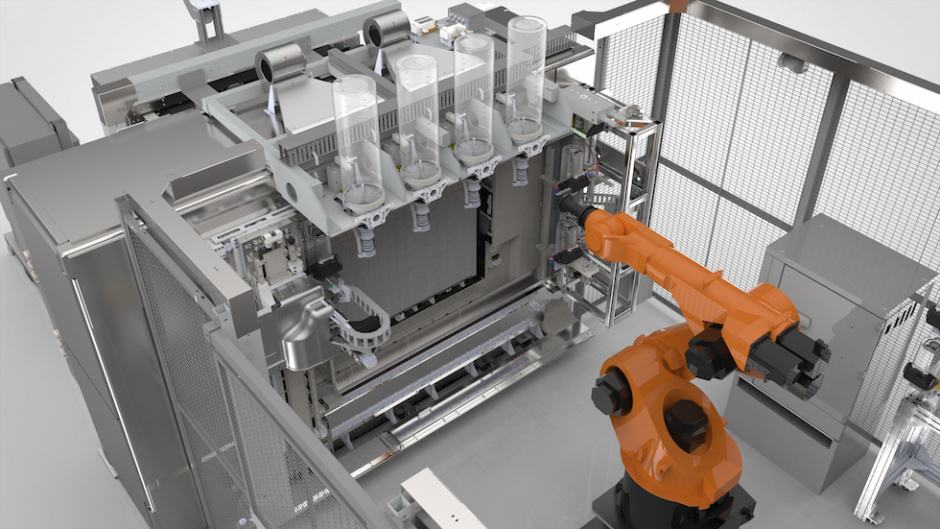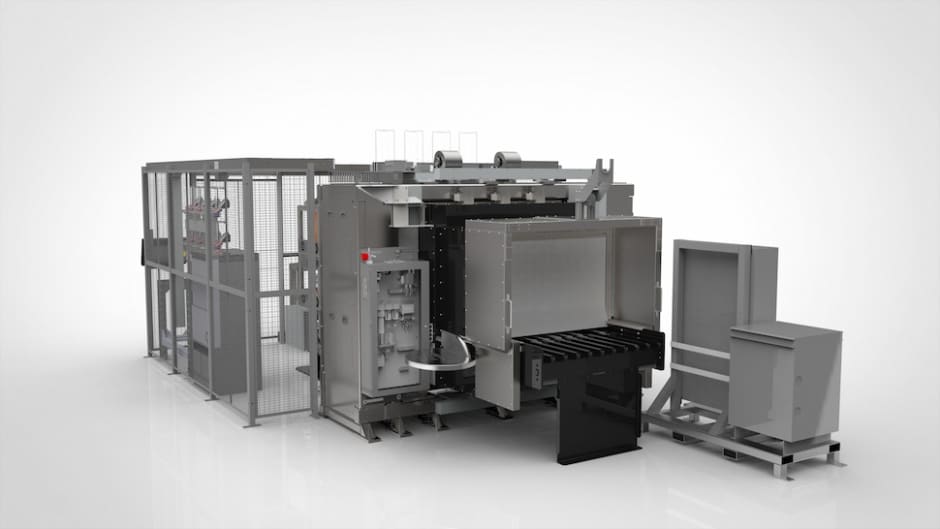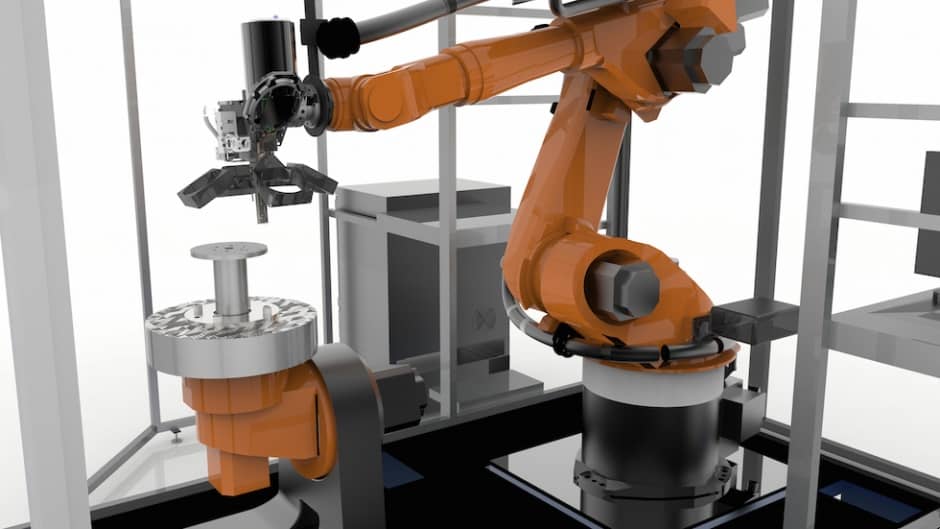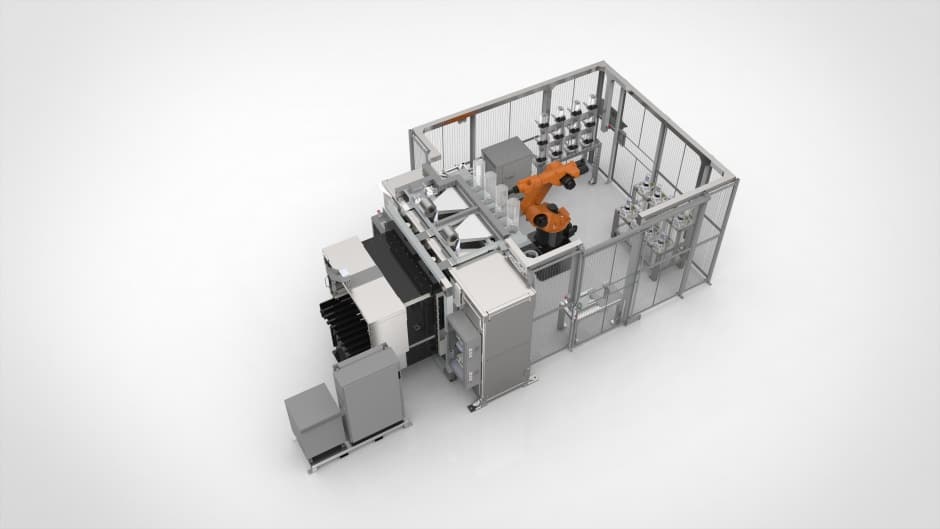In December 2014 the editorial team at The Engineer were as excited as the rest of the nation about the prospect of being able to build objects with additive or 3D-printing machines.
The team had taken delivery of a CEL Robox micro-manufacturing machine; a 3D printer priced under £1,000 that had entered a consumer market estimated by CEL’s calculations to be worth a potential £2.9bn in the UK alone.
The emergence of 3D printing for the consumer market was made possible when the patent for fused deposition modelling (FDM) expired in 2009, bringing machines that would normally cost over US$10,000 to below US$1,000, and consequently putting the technology within reach of the burgeoning army of ‘makers’ that were keen to adopt the technology.

Within the industrial sphere, 3D printing has long been an established method of prototyping and taking designs through multiple iterations. However, in 2014 PwC asked 100 companies how they were using 3D printing, with 29 per cent saying that it was being used experimentally to see how it could be applied. A quarter said they were using the process for prototyping, and 10 per cent said they were using additive for prototyping and production.
The term ‘additive manufacturing’ has since found a place in the industrial lexicon and gained a certain ubiquity that conjures up images of mass-produced parts and products. Market research company Canalys estimates the global market for 3D printers and services to have grown from US$2.5bn in 2013 to US$16.2bn in 2018 but, according to PwC, the technology has not been capable enough or cost-effective enough for most end-product or high-volume manufacturing.
While this situation is unlikely to change radically in the short term, additive has gained enough traction for companies to make serious investments in the technology, including GE, which earlier in the year made a combined bid of US$1.4bn for Sweden’s Arcam and Germany’s SLM Solutions Group. The deal for the latter fell through but was superseded by the acquisition of a majority stake in Germany’s Concept Laser, a designer and manufacturer of powder bed-based laser additive manufacturing machines, for US$599m.

Similarly, Siemens recently purchased Materials Solutions Ltd, a Worcester-based company that uses selective laser melting (SLM) to manufacture high-performance metal parts. At the time of the acquisition in August 2016, Willi Meixner, CEO of Siemens Power and Gas division, said the acquired company’s strength was turning models into high-quality components in record time. For Siemens, the technology is moving the company away from rapid prototyping into serial production, marking a shift that will see the company industrialise and commercialise additive technology.
Likewise, GE plans to grow its additive business by US$1bn by 2020, but expects to compliment this with estimated cost reductions of US$3-5bn over the next decade via additive technology. Speaking in September this year, Jeff Immelt, chairman and CEO of GE, said additive manufacturing would be the key driver to transition the manufacturing giant into a digital industrial company. David Joyce, president and CEO of GE Aviation added that newly acquired. Concept Laser is a “true pioneer in metal laser melting technology” and that the development of more productive machines will allow the company to offer additive manufacturing as a service for its customers.
Certain estimates value the global 3D-printing metals market at US$777m by 2020 but the fact remains that FDM with thermosplastics is still dominant and used in over 90 per cent of industrial 3D printers.
This is the view of Scott Crump, the inventor of FDM who went onto co-found Stratasys, the Minneapolis- based company synonymous with 3D printing. Crump was speaking before journalists and analysts at Stratasys HQ in Eden Prairie prior to the launch of two concepts designed to transform the way in which thermoplastics and composites are formed and utilised.
The Infinite-Build 3D Demonstrator and Robotic Composite 3D Demonstrator were being previewed prior to the International Manufacturing Technology Show, which was held in September in Chicago.

Common to the Infinite-Build 3D Demonstrator and Robotic Composite 3D Demonstrator is an approach to FDM extrusion that increases throughput and repeatability. Both use a worm drive filament extruder that winds filament through the print head to increase the sort of flow pressure required for composite extrusion.
The Infinite-Build 3D Demonstrator is designed to address the requirements of aerospace, automotive and other industries for large lightweight, thermoplastic parts with repeatable mechanical properties.
To do so, the traditional 3D-printer concept has been turned on its side for an approach to building parts that prints on a vertical plane to produce items measured in feet rather than inches. According to Richard Garrity, president of Stratasys Americas, the system produces parts 10 times more quickly than other FDM technologies.
Stratasys’ Robotic Composite 3D Demonstrator, developed in conjunction with Siemens, removes steps such as manual lay-up and curing in an autoclave to produce composite parts in 3D. Garrity added that the traditional composite process can be difficult in terms of scaling, and rendering the types of detail often required in parts.
By comparison, the Robotic Composite 3D Demonstrator delivers 3D printing by using an eight-axis motion system (a six-axis robot with a two-axis rotary positioner) that enables precise material placement for strength while also reducing the need for support structures and eradicating layer transitions.
As their designations suggest, both technologies are at the demonstration phase but input from Boeing and Ford appears to verify Garrity’s assertion that Stratasys is evolving toward a more customer-centric approach to business.
He added that Stratasys is targeting key markets where the company thinks additive will be most disruptive, namely aerospace, automotive, and healthcare.
“Our mentality has gone to use-case first,” he said. “Traditionally, we’ve been known as a company that makes great printers but we’re very focused now on applications and the use case. We start there, understanding the specific use case [and] understand the problems our customers are trying to solve with regard to the use case, and then working towards a solution.”
He added that the company’s holistic approach to problem solving is going beyond the supply of printers with broader consideration being given to materials, software, services, consulting and how these can be integrated, in the eyes of the customer, to help them recognise and realise the value of additive manufacturing.

One application of the Infinite Build machine could see the production of aircraft interiors, itself a market said to be worth US$13.5bn in 2015. But away from production parts, the technology has been identified as being crucial in the design and build of jigs, fixtures, and tooling.
Garrity said: “At Eden Prairie we’re using over 1,000 of our own FDM jigs and fixtures. Today’s jigs and fixtures are the unsung heroes of the factory floor. They’re done traditionally via metal, which [is] heavy and not necessarily customised to a given process or to a given worker, and the lead times often prohibit the use of them, if at all.
“When you can convert jigs and fixtures into a thermoplastic material you can produce them on demand, literally overnight. They are personalised, customised to a given worker or process. That has significant benefits when it comes to safety on the line, so instead of seeing heavy crane lifts you’ve got thermoplastic parts that can be better managed and used for workers out on the floor.”
Dr Ellen Lee, technical leader, additive manufacturing research, Ford Motor Company, said: “Some tools can take months to make. Now, if we can reduce that to days for a printed tool we can start to look at reducing or eliminating the time associated with making prototype tooling and eventually production tooling.”
For Stratasys CEO Ilan Levin, the company's technology improvements and use of innovative materials are presenting a set of new possibilities for additive, not just by displacing the conventional, but by re-imagining how products can be made and the types of output that can be derived, regardless of the process.










Water Sector Talent Exodus Could Cripple The Sector
Maybe if things are essential for the running of a country and we want to pay a fair price we should be running these utilities on a not for profit...